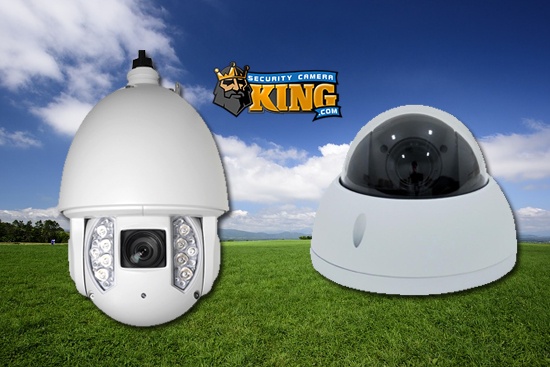Security Terminology by SCK
Hey everyone, there’s a lot of security terminology out there and sometimes the amount of information can be daunting! CCTV this, COAX that, access control this, and network that, what does any of this mean? How do all of these concepts relate to each other and does knowing all of them matter? Well, the short answer to that is the more you know about anything, the more versatile you’ll be in approaching the field that knowledge is a part of. If you intend to utilize or work with security technology, knowing what a lot of the security terminology is and what those terms mean can be of extreme benefit to you. Today we’re going to cover some of the more overarching terminologies out there- the big categories. we’re going to break down some smaller terms within those categories and the goal is to try and present a more concrete understanding, or at least an introduction into what each of these terms is, and how they relate to each other.
Firstly before we dive in, understand that all of these ideas relate to each other in one key way – Security; and that’s actually the first of our Security Terminology!
Security – Security is the abstract idea that a person(s) and their property are safe from danger or malicious activities. at Security camera king we provide various technologies that work together to help provide security to any given location. There are many technologies that can do this, and they can do this in different ways, both proactively and reactively.
Proactive vs Reactive – Security can fall into two solution types, proactive and reactive. Proactive security solutions are designed to either deter, or prevent attempted criminal activity such as trespassing, vandalism, and theft. Reactie solutions are designed to provide support in case one of these negative situations occurs despite proactive measures. Various technologies we carry fall into either one or both of these categories. Both types of solutions are necessary for total security
CCTV- Closed-circuit Television is the name of many types of technology components working together to provide a primarily reactive security solution, with some proactive security elements. CCTV is generally composed of a series of surveillance cameras connected by way of a network or COAX cable to a central CCTV recorder. These cameras capture footage and simultaneously record this footage and display it live to those with access to the CCTV system. CCTV is a primarily reactive solution because its main purpose is to provide recorded video and/or audio evidence of an event after the fact. However, CCTV has some proactive elements. For example, criminals are shown statistically to be less likely to follow through with malicious activities if they see a CCTV system on-site, which shows CCTV is effective as a deterrent. Further, on-site and remote security personnel observing the live footage can react to events in as close to real-time as possible to potentially prevent an issue or stop it from getting worse.
- DVR – Digital Video Recorder for use with COAX cameras.
- COAX Cable and Cameras– Coaxial cable used to transmit the video signal from COAX Cameras which use this type of cable.
- NVR – Network Video Recorder for use with IP or “network” cameras.
- IP ‘Network’ Cameras – Cameras that transmit their audio/video data via a computer network and ethernet cable. This can be direct to an NVR or over a local network. Often get their power over ethernet as well using POE
- Ethernet Cable – comes in primarily cat5e and Cat6 types, used to connect network devices to a network and transmit/send data. Can also send power to cameras with POE
- POE – Power over Ethernet – The ability to send power to devices over the same ethernet cable managing their data, allowing for a single cable solution.
Access Control – Access control is a highly proactive security solution. Access control is a system of components, much like how CCTV is a system of components. With access control, several types of electronic locking devices are installed at various entry/exit points across a facility. These are tied back to a central control station. This station is then also tied to a series of readers which allow those with the proper credentials and/or key devices to enter or exit at the designated time periods set by the system operator. This is proactive because it prevents those without access from even getting into a location.
Thanks for joining us today as we talked about Secruity Terminology! Well be posting more Terminology articles here soon, so stay tuned. Check out the additional links for more info on some of these ideas! For any questions on product compatibility, availability or any other information don’t hesitate to give our Sales Pro’s a call at 561-288-5258 . Don’t forget to subscribe to our YouTube Channel for more Tutorials and CCTV info. Until Next time, Stay Safe!
Related: What’s the difference between DVR and NVR?
Related: What’s the difference between H264 and H265?
Related: IP PTZ Security Cameras – All There is to Know
Related: Resolution, and why does it matter?
Related: What are active deterrence cameras?
Find Us On: Facebook | Twitter | YouTube











